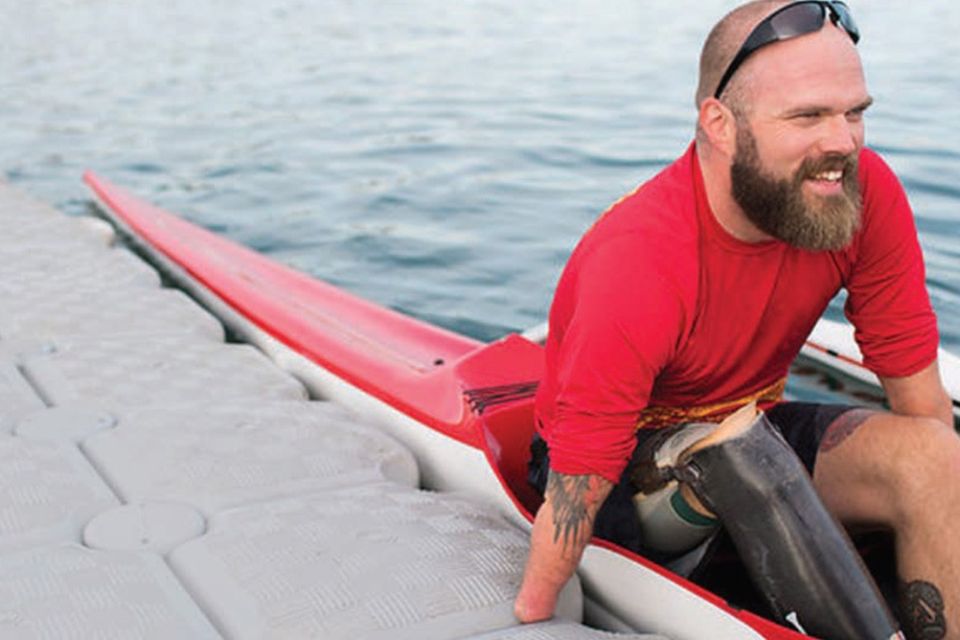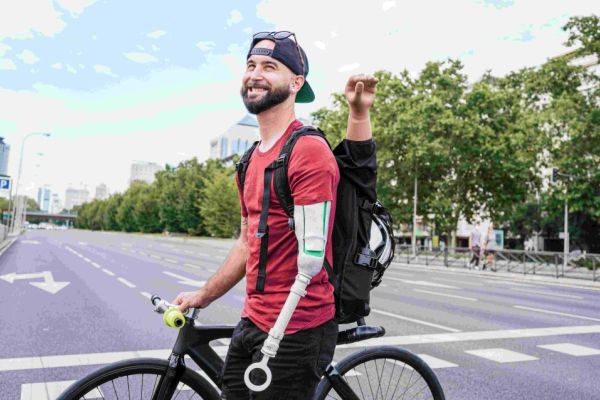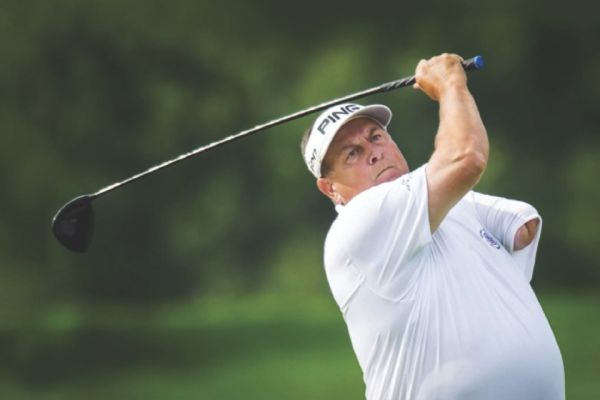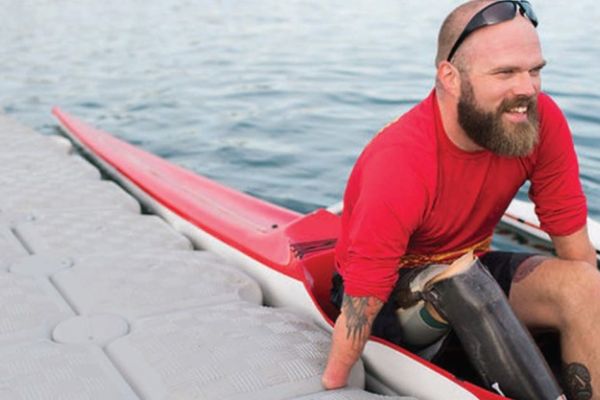Adaptive Canoeing
Author: Adrienne Skinner

Although it was 11 years ago, I remember it clearly. I had volunteered to help launch PaddleAll, the national adaptive program in western Ontario.
And that’s how I found myself at that first paracanoe conference. I, as an amputee, was the only athlete there with a disability. When it was clear that we needed a para-athlete to represent Canada at the upcoming European Cup, the entire room of delegates looked toward me.
Yikes! I had done some racing, but came to the sport as an adult and was not what you would call “high-performance.”
Years before, I had come upon the Mississauga Canoe Club in Port Credit when I was looking for a spot to slip my kayak into the cool waters of the Credit River. Any sport that involved water called my name. Water for me, an above-knee amputee, provided a sense of freedom. I signed up on the spot. Over the next 20 years the club became a second home to me. In paddle sports, athletes of different ages often mix and the older, more experienced paddlers become mentors to the younger kids. It creates a great family atmosphere where you forge life-long friendships.
The two-person Canadian team consisting of myself and a recreational paddler named Jim Mahaffy, went on to compete in Milan at the European Cup in the spring of 2008. Subsequently, paracanoe was a demonstration event at the World Championships for the first time, in Halifax in 2009. From there, competitors like Christine Selinger from Regina catapulted Canada to the forefront of paracanoe on the international stage. She won several medals, including two World Championship golds. Erica Scarff of Mississauga represented Canada in Rio and is still on the national team.
Paracanoe is great for anyone who has limited lower body mobility. Next to swimming, paddle sports are the most popular water sport for those with a mobility issue. All equipment is provided and a comprehensive safety orientation is part of the program. When I started kayaking there wasn’t any adaptive programming and I had to figure things out on my own. I tried to hold the rudder between my toes: not a good long-term solution. Today, coaches are able to help adapt equipment to suit the paddler’s individual needs. I now use a steering mechanism which loops around my foot to control the rudder. A game changer!
Paracanoe sprint races involve two types of boats, kayak and va’a. The kayak is propelled by a double-blade paddle, while the va’a is an outrigger canoe with an ama (second pontoon) as a support float and is used with a single-blade paddle. Both kayak and va’a have three different classes of events for men and women, depending upon the classification of an athlete’s disability. At the international level all paracanoe races are individual events and competed at a distance of 200m. Just as all ages are included at the regatta, so are all abilities. The paracanoe races are run along with the other events at all local, divisional and national regattas.
It’s official! The sport continues to gain momentum. Para-va’a has now been added to the Tokyo Paralympics in 2020 and it has been confirmed that paracanoe will be contested in Paris in 2024. The Paracanoe World Conference was held in Sweden, in 2018, with the objective of widening the scope of the sport.
Racing doesn’t play a big part in my paddling life any longer. In recent years, I’ve tried both stand-up paddling and white water canoeing. There is nothing better for me than getting out on the river either at the end of the day, or during a sunny weekend. Clubs across Canada offer programs for people of all ages and abilities. Whether you want to race, or just get out on the water, paracanoe is the best way to see another side of life.
Yikes! I had done some racing, but came to the sport as an adult and was not what you would call “high-performance.”
Years before, I had come upon the Mississauga Canoe Club in Port Credit when I was looking for a spot to slip my kayak into the cool waters of the Credit River. Any sport that involved water called my name. Water for me, an above-knee amputee, provided a sense of freedom. I signed up on the spot. Over the next 20 years the club became a second home to me. In paddle sports, athletes of different ages often mix and the older, more experienced paddlers become mentors to the younger kids. It creates a great family atmosphere where you forge life-long friendships.
The two-person Canadian team consisting of myself and a recreational paddler named Jim Mahaffy, went on to compete in Milan at the European Cup in the spring of 2008. Subsequently, paracanoe was a demonstration event at the World Championships for the first time, in Halifax in 2009. From there, competitors like Christine Selinger from Regina catapulted Canada to the forefront of paracanoe on the international stage. She won several medals, including two World Championship golds. Erica Scarff of Mississauga represented Canada in Rio and is still on the national team.
Paracanoe is great for anyone who has limited lower body mobility. Next to swimming, paddle sports are the most popular water sport for those with a mobility issue. All equipment is provided and a comprehensive safety orientation is part of the program. When I started kayaking there wasn’t any adaptive programming and I had to figure things out on my own. I tried to hold the rudder between my toes: not a good long-term solution. Today, coaches are able to help adapt equipment to suit the paddler’s individual needs. I now use a steering mechanism which loops around my foot to control the rudder. A game changer!
Paracanoe sprint races involve two types of boats, kayak and va’a. The kayak is propelled by a double-blade paddle, while the va’a is an outrigger canoe with an ama (second pontoon) as a support float and is used with a single-blade paddle. Both kayak and va’a have three different classes of events for men and women, depending upon the classification of an athlete’s disability. At the international level all paracanoe races are individual events and competed at a distance of 200m. Just as all ages are included at the regatta, so are all abilities. The paracanoe races are run along with the other events at all local, divisional and national regattas.
It’s official! The sport continues to gain momentum. Para-va’a has now been added to the Tokyo Paralympics in 2020 and it has been confirmed that paracanoe will be contested in Paris in 2024. The Paracanoe World Conference was held in Sweden, in 2018, with the objective of widening the scope of the sport.
Racing doesn’t play a big part in my paddling life any longer. In recent years, I’ve tried both stand-up paddling and white water canoeing. There is nothing better for me than getting out on the river either at the end of the day, or during a sunny weekend. Clubs across Canada offer programs for people of all ages and abilities. Whether you want to race, or just get out on the water, paracanoe is the best way to see another side of life.




 How to resolve AdBlock issue?
How to resolve AdBlock issue?